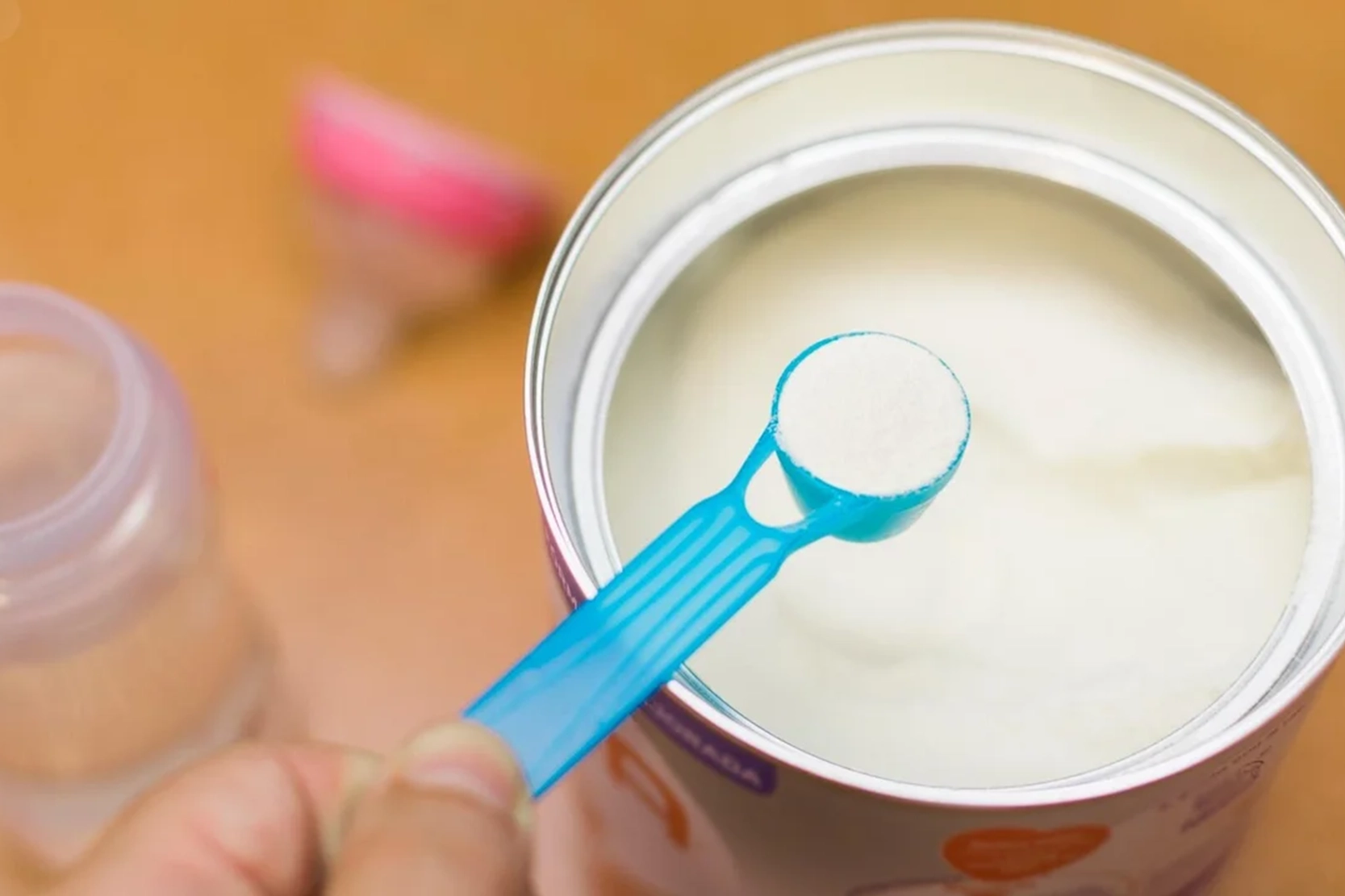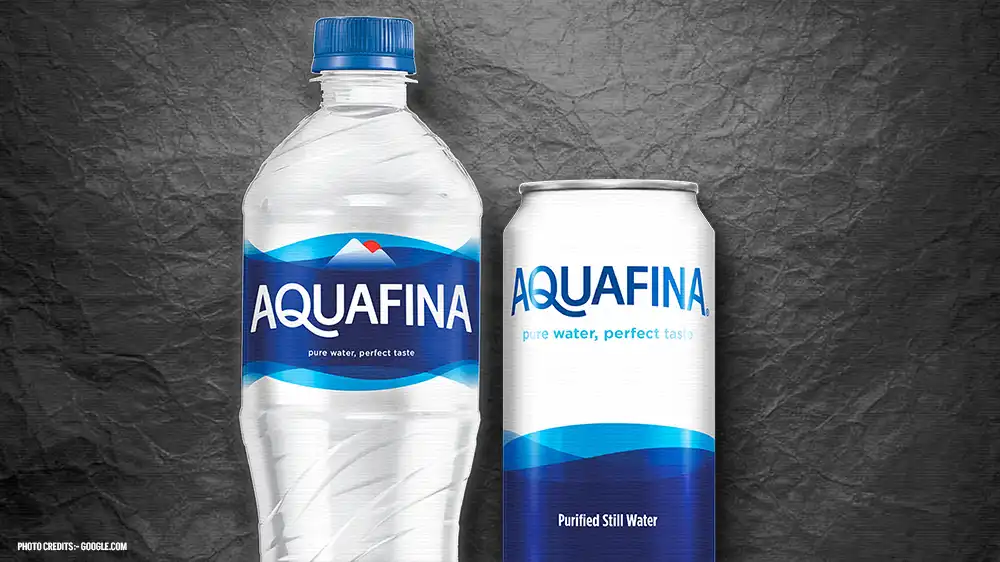
HEALTH BLOG
Is Aquafina Water Good: Taste, Purity, and Environmental Impact
-
Rahul Priydarss
Discover the answer to the question “Is Aquafina Water Good?” in our comprehensive article. We explore Aquafina’s purification process, health benefits, and environmental impact to provide a thorough assessment of this popular bottled water. Learn about its taste, safety, and how it compares to other brands. Whether you’re considering Aquafina for hydration or looking into its sustainability efforts, this article offers valuable insights for informed choices.
Introduction of Is Aquafina Water Good?:
Aquafina, a popular bottled water brand owned by PepsiCo, is widely recognized and available in various markets. Launched in 1994, it quickly gained a reputation for its clean and crisp taste. The brand’s commitment to quality is evident through its rigorous purification process, which includes reverse osmosis and a series of filtration steps designed to ensure that the water meets high standards of purity.
In a world where the choice of bottled water can be overwhelming, Aquafina stands out for its consistent taste and widespread availability. However, questions often arise about the quality and benefits of bottled water compared to tap water or other bottled water brands. This article will delve into the attributes of Aquafina water, examining its purification process, nutritional aspects, and overall benefits, to determine if it lives up to its reputation as a reliable source of hydration.
What is Aquafina Water?:
Aquafina Water is a bottled water brand produced and distributed by PepsiCo. It is known for its pure, clean taste and is widely available in various sizes and packaging options. Aquafina water undergoes a thorough purification process to ensure its quality, which includes multiple stages of filtration such as reverse osmosis, carbon filtration, and ozonation.
The reverse osmosis process removes impurities and contaminants, while carbon filtration helps to further purify the water and enhance its taste. Ozonation is used to disinfect the water, ensuring that it is free from microorganisms. Aquafina water is essentially purified municipal tap water, which is treated and bottled to provide consumers with a consistent and reliable product. The brand positions itself as a premium bottled water option, aiming to offer a refreshing and clean hydration experience.

Table of Contents
Origin and History of Aquafina Water:
Aquafina Water was introduced to the market by PepsiCo in 1994. The brand was created to provide consumers with a premium bottled water option, leveraging PepsiCo’s expertise in beverage production and distribution. Initially launched in the United States, Aquafina quickly gained popularity due to its clean, crisp taste and the convenience of bottled water.
The name “Aquafina” is derived from the Latin word “aqua,” meaning water, and the Spanish word “fina,” meaning fine, reflecting the brand’s emphasis on purity and quality. Aquafina’s water source is municipal tap water, which is rigorously treated through a multi-step purification process to ensure it meets high standards of cleanliness and safety.
The brand’s success can be attributed to its extensive distribution network, consistent product quality, and effective marketing strategies. Over the years, Aquafina expanded its product line to include flavored and enhanced waters, catering to a broader range of consumer preferences.
Today, Aquafina is one of the leading bottled water brands globally, recognized for its commitment to quality and innovation in the bottled water industry. The brand continues to evolve, adapting to market trends and consumer demands while maintaining its reputation for providing a reliable source of hydration.
What is PepsiCo:
PepsiCo is a global food and beverage company headquartered in Purchase, New York. Founded in 1965 through the merger of Pepsi-Cola and Frito-Lay, PepsiCo has grown into one of the world’s largest and most diverse food and beverage companies. The company’s product portfolio includes popular brands such as Pepsi, Mountain Dew, Tropicana, Gatorade, Quaker Oats, and Lay’s. This extensive range of products allows PepsiCo to cater to a wide array of consumer preferences, from snacks and beverages to nutrition products.
PepsiCo’s success is driven by its commitment to innovation and sustainability. The company invests heavily in research and development to create and improve new products. Additionally, PepsiCo has implemented various sustainability initiatives to reduce its environmental impact. These efforts include reducing water usage, lowering greenhouse gas emissions, and increasing the use of recyclable materials in packaging. PepsiCo aims to balance its growth with responsibility towards environmental and social issues.
The company’s global reach and diverse product range give it a significant presence in numerous global markets. PepsiCo operates in more than 200 countries and territories, allowing it to serve a broad and varied customer base. This extensive network supports the company’s ability to respond to local market trends and consumer demands, contributing to its continued success and growth in the competitive food and beverage industry.
Ingredients of Aquafina Water:
Aquafina Water primarily consists of purified water. The ingredients are straightforward, reflecting the brand’s commitment to purity and simplicity. Here’s a breakdown of what you’ll find in a bottle of Aquafina.
Purified Water: The main ingredient, Aquafina’s water undergoes a comprehensive purification process that includes reverse osmosis and carbon filtration. This process removes impurities and contaminants to ensure the water is clean and safe for consumption.
Minerals: While Aquafina’s primary focus is on providing purified water, trace minerals may be present in very small amounts. These minerals are naturally occurring or added to enhance taste, though they are typically in minimal quantities compared to mineral waters.
Sodium: Aquafina water may contain small amounts of sodium, which is generally added during the purification process to balance the water’s taste. The sodium content is kept low, making it suitable for most dietary needs.
pH Level: The pH level of water is an important factor in determining its quality and taste. Aquafina water has a neutral pH level of around 7. This balance is ideal for most people, as it doesn’t have a noticeable acidic or alkaline taste. It’s also suitable for a wide range of dietary needs and preferences.
Presence of Additives: Aquafina water is known for its purity, and as such, it contains no added flavors or sugars. The focus on purity ensures that consumers receive a product that is free from unnecessary additives, aligning with its brand promise of delivering clean, refreshing water.
Here’s a table summarizing the typical ingredients of Aquafina Water along with their approximate quantities:
| Ingredient | Quantity |
|---|---|
| Purified Water | 100% |
| Sodium | ~0-5 mg per 8 oz bottle |
| Total Dissolved Solids (TDS) | ~10-15 ppm |
Note: The quantities of ingredients like sodium and TDS can vary slightly based on the source and the specific batch of water. Aquafina focuses on purity, so the main ingredient is purified water with minimal added minerals. The TDS level reflects the water’s purity and is measured in parts per million (ppm).

Health Benefits of Aquafina Water:
Aquafina Water offers several health benefits due to its purity and essential role in hydration. Here are some key advantages:
Hydration: Drinking sufficient water is crucial for maintaining overall health. Aquafina, like other purified waters, helps keep the body hydrated, supports bodily functions, and can improve energy levels and cognitive function.
Purity: Aquafina’s rigorous purification process, including reverse osmosis, ensures that the water is free from contaminants and impurities. This reduces the risk of consuming harmful substances and promotes a healthier drinking experience.
Digestive Health: Staying hydrated helps maintain a healthy digestive system. Aquafina water aids in digestion and can help prevent constipation by keeping the digestive tract hydrated.
Skin Health: Proper hydration is beneficial for skin health. Drinking adequate amounts of water, including Aquafina, can help keep skin hydrated, improving its appearance and elasticity.
Supports Kidney Function: Water helps the kidneys filter waste products from the blood and remove them through urine. Regular consumption of Aquafina supports kidney health by aiding in the elimination of waste and reducing the risk of kidney stones.
Calorie-Free: Aquafina water contains no calories, sugars, or fats. It is a healthy choice for hydration without adding unnecessary calories to your diet, which can be beneficial for weight management and overall health.
Environmental Impact of Aquafina Waste:
The environmental impact of Aquafina, like many bottled water brands, is significant due to the nature of bottled water production and disposal. Here’s an overview of the key environmental concerns.
Plastic Waste: Aquafina bottles are made from polyethylene terephthalate (PET), a type of plastic that is commonly used for beverage containers. While PET is recyclable, many bottles end up in landfills or as litter, contributing to plastic pollution. The production and disposal of plastic bottles contribute to environmental degradation, including soil and water pollution.
Resource Consumption: The production of bottled water requires substantial resources, including water and energy. Extracting water for bottling can strain local water supplies, especially in regions facing water scarcity. Additionally, the manufacturing process involves energy use for producing, filling, and transporting bottles, contributing to carbon emissions and resource depletion.
Carbon Footprint: The entire lifecycle of bottled water, from production to transportation, generates carbon emissions. Transportation of bottled water, especially over long distances, adds to greenhouse gas emissions. The carbon footprint of producing and distributing bottled water is higher compared to other beverage options, including tap water.
Waste Management Challenges: Despite recycling efforts, a significant proportion of plastic bottles are not properly recycled. Inefficient waste management systems and low recycling rates exacerbate the issue, leading to more plastic waste in the environment.
Impact on Marine Life: Plastic pollution from bottled water can end up in oceans and other water bodies, where it poses a threat to marine life. Animals can ingest plastic debris or become entangled in it, leading to injury or death.
Consumer Reviews and Feedback for Aquafina Water:
Aquafina Water generally receives mixed to positive reviews from consumers, with feedback focusing on various aspects such as taste, purity, and packaging. Here’s a summary of common consumer opinions.
Taste and Purity: Many consumers appreciate Aquafina for its clean, crisp taste, which is often described as neutral and refreshing. The rigorous purification process, including reverse osmosis, is frequently cited as a factor in the water’s perceived purity and taste. However, some consumers might find the taste to be too bland or lacking in minerality compared to other bottled water brands.
Availability and Convenience: Aquafina’s widespread availability is a significant advantage for many consumers. The brand is commonly found in grocery stores, convenience stores, and vending machines, making it a convenient choice for those who need bottled water on the go.
Packaging: Reviews often highlight the practical aspects of Aquafina’s packaging. The brand offers various sizes, which cater to different needs, from small bottles for personal use to larger ones for sharing. However, some feedback addresses concerns about the environmental impact of plastic packaging. Many consumers are conscious of plastic waste and express a desire for more sustainable packaging options.
Pricing: Aquafina is generally considered reasonably priced compared to other premium bottled water brands. Consumers appreciate the value for money, especially given the brand’s wide availability and consistent quality.
Health and Safety: The brand’s focus on rigorous purification processes reassures consumers about the safety and health aspects of the water. Positive reviews often emphasize the confidence in Aquafina’s quality due to its extensive filtration and purification methods.
Environmental Concerns: Some feedback points to the environmental impact of bottled water, including plastic waste and the carbon footprint associated with production and transportation. Consumers concerned about environmental issues may express a preference for alternatives like reusable bottles or brands with eco-friendly practices.
Cost and Availability of Aquafina Water:
Aquafina Water is widely available and generally priced competitively, making it a popular choice for consumers seeking bottled water. Here’s a closer look at its cost and availability.
1. Availability:
Retail Stores: Aquafina is commonly found in major grocery stores, convenience stores, and supermarkets across the United States and many other countries. Its widespread distribution ensures easy access for most consumers.
Vending Machines: The brand is often available in vending machines, particularly in public areas such as schools, offices, and transportation hubs.
Online: Aquafina can be purchased online through various retailers and delivery services. Many e-commerce platforms offer options for bulk buying, which can be convenient for regular consumers.
2. Cost:
Single Bottles: The cost of a single bottle of Aquafina water varies depending on the size and location. On average, a 16.9-ounce (500 ml) bottle typically ranges from $0.50 to $1.00 USD.
Pack Pricing: Aquafina is available in multi-packs, such as packs of 6, 12, or 24 bottles. Prices for these packs vary but generally offer a lower per-bottle cost compared to single bottles. For example, a pack of 24 bottles might cost between $4.00 and $8.00 USD, depending on the retailer and any ongoing promotions.
Bulk Purchasing: For larger quantities, such as cases of Aquafina water, prices are often discounted compared to buying individual packs. This option is popular for events, offices, and households with high water consumption.
Aquafina Water Comparison with Other Bottled Waters:
When comparing Aquafina Water to other bottled water brands, several factors come into play, including purification methods, taste, packaging, and pricing. Here’s a detailed comparison of Aquafina with other popular bottled water brands such as Dasani, Nestlé Pure Life, and Poland Spring.
1. Purification Process:
- Aquafina Water: Utilizes reverse osmosis as its primary purification method. This process removes impurities and contaminants, followed by carbon filtration and ozonation to ensure the water is clean and safe.
- Dasani: Also uses a reverse osmosis purification process. In addition to reverse osmosis, Dasani adds a blend of minerals for taste enhancement.
- Nestlé Pure Life: Uses a combination of reverse osmosis and other filtration methods, including UV treatment. Nestlé Pure Life also adds minerals for taste.
- Poland Spring: Sources its water from springs in Maine and uses a multi-step filtration process, including ultraviolet light and ozone, to ensure quality. It is often considered a spring water rather than purified municipal water.
2. Taste and Mineral Content:
- Aquafina Water: Known for its clean, crisp taste with minimal mineral content. It is often described as having a neutral flavor due to its extensive purification process.
- Dasani: Features a slightly more pronounced taste due to the added minerals, which some consumers prefer. The mineral content can make it taste somewhat different from Aquafina.
- Nestlé Pure Life: Has a taste that is somewhat influenced by the added minerals, which can vary depending on the specific source of the water. It may have a slightly different flavor profile compared to Aquafina.
- Poland Spring: As spring water, it often has a more natural mineral taste, which can be distinct from the more neutral taste of Aquafina.
3. Packaging:
- Aquafina Water: Available in various sizes, including 16.9-ounce, 20-ounce, and larger multi-packs. The packaging is standard PET plastic.
- Dasani: Similar to Aquafina, Dasani offers a range of bottle sizes and packaging options. The design and bottle shape may differ slightly from Aquafina.
- Nestlé Pure Life: Also provides multiple bottle sizes and packaging options. It is available in both standard and eco-friendly bottles.
- Poland Spring: Typically available in a range of sizes, including 16.9-ounce and larger bottles. Packaging may include options for both standard and eco-friendly bottles.
4. Pricing:
- Aquafina Water: Generally priced competitively. A single bottle can cost between $0.50 and $1.00 USD, with multi-packs offering lower per-bottle prices.
- Dasani: Pricing is similar to Aquafina, often slightly higher due to the added mineral content. Single bottles typically cost between $0.50 and $1.00 USD, with multi-packs also offering discounts.
- Nestlé Pure Life: Pricing is comparable to Aquafina and Dasani, with single bottles ranging from $0.50 to $1.00 USD and multi-packs offering better value.
- Poland Spring: Prices can be slightly higher due to its spring water sourcing. Single bottles generally range from $0.75 to $1.25 USD, with multi-packs offering discounts.
5. Environmental Considerations:
- Aquafina Water: Like other bottled water brands, Aquafina faces criticism for its plastic waste and carbon footprint. However, the brand is exploring more sustainable practices.
- Dasani: Also faces similar environmental concerns. Coca-Cola, the parent company, has made efforts to improve sustainability but still deals with plastic waste issues.
- Nestlé Pure Life: Nestlé has faced criticism for its water extraction practices and environmental impact, though it has worked on sustainability initiatives.
- Poland Spring: The brand has faced scrutiny over its water extraction practices and environmental impact, with ongoing debates about sustainability.
FAQs about Aquafina Water:
A1: Aquafina Water is a bottled water brand produced by PepsiCo, known for its clean and crisp taste. It undergoes a rigorous purification process, including reverse osmosis, carbon filtration, and ozonation.
A2: Aquafina Water is purified through reverse osmosis, which removes impurities, followed by carbon filtration to enhance taste and ozonation to disinfect the water.
A3: Yes, Aquafina Water is considered healthy due to its purity and hydration benefits. It is free from contaminants and additives, making it a good choice for maintaining hydration.
A4: The main environmental concerns include plastic waste from bottles and the carbon footprint associated with production and transportation. PepsiCo is working on more sustainable practices to address these issues.
A5: Aquafina Water is known for its neutral taste and consistent quality. It uses a similar purification process to brands like Dasani but differs in taste and mineral content. Pricing and packaging options are also competitive.

-Please remember, to always consult with healthcare professionals or Doctors for personalised advice related to medical conditions.
Conclusion:
In conclusion, the question “Is Aquafina Water Good?” is answered affirmatively based on its attributes and consumer feedback. Aquafina Water, with its rigorous purification process and clean, neutral taste, lives up to its reputation as a reliable source of hydration. The brand’s commitment to quality is evident in its use of reverse osmosis and extensive filtration methods. While it faces environmental challenges associated with plastic waste, PepsiCo is working towards more sustainable practices. Overall, Aquafina Water is a good choice for those seeking a consistent and pure bottled water option.




